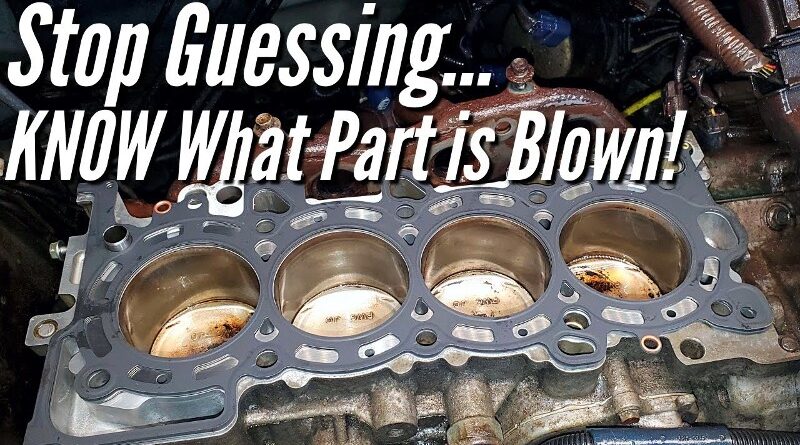
The most frequent issue car owners deal with is a blown head gasket. The engine may sustain serious harm, necessitating pricey repairs.
What if we told you there was another method to fix it without entirely replacing the head gasket? The traditional fix is to replace the head gasket.
An essential component that keeps the internal combustion process sealed and the engine’s liquids from mixing are the head gasket. Sadly, a blown head gasket can bring about numerous difficulties, such as oil leaks, overheating, and even failing emissions testing.
Can these issues be resolved without purchasing a new car despite the severe financial blow they may bring?
The video will guide you through the entire process of fixing a blown head gasket.
There are more affordable choices, even though repairing a blown head gasket generally costs hundreds of dollars.
This article will present a guide on how to fix a blown head gasket without replacing it. It will also address the needed equipment and means to accomplish this.
Understanding a Blown Head Gasket
Before we delve into the solutions, let’s understand what a blown head gasket is. The head gasket is a crucial component that seals the cylinder head to the engine block, creating a combustion chamber.
It ensures that the coolant and oil channels remain separate from each other. This seal is broken when a head gasket blows, enabling oil and coolant to mix or leak. This may lead to troubles with the engine and other things.
Signs of a Blown Head Gasket
Overheating engine
If your engine constantly overheats, it may indicate a blown head gasket.
White exhaust smoke
Thick white smoke from the exhaust pipe could indicate coolant leaking into the combustion chamber.
Milky oil
Check your engine’s oil dipstick. If the oil appears milky or frothy, it may indicate coolant mixing with the oil.
Loss of coolant
Frequent coolant loss without visible leaks might be due to a blown head gasket.
Bubbles in the radiator
If you notice bubbles in the radiator when the engine runs, it could indicate a combustion leak.
Can a Blown Head Gasket be Fixed Without Replacement?
Yes, a blown head gasket can be repaired rather than replaced. Using a head gasket sealer is one practical approach. A specifically prepared solution called a head gasket sealer aids in improving minor to moderate head gasket leakage.
It stops additional leaking and restores the gasket’s functional integrity by sealing the damaged area.
Step-by-Step Guide to Fixing a Blown Head Gasket
Step 1: Prepare the Vehicle
Ensure the automobile is parked on a level surface and the engine is cool. The tools and materials that need to be gathered are the head gasket sealer, coolant, and wrenches.
Step 2: Drain the Coolant
Locate the radiator drain plug or remove the lower radiator hose to drain the coolant from the system. Dispose of the old coolant properly.
Step 3: Pump Out the Cooling System
To eliminate any remaining coolant or debris, thoroughly rinse the cooling system with clean water. Adhere to the specific product’s manufacturer instructions.
Step 4: Apply a Head Gasket Sealer
Pay strict attention to the head gasket sealer’s instructions. Before pouring the sealer into the radiator and turning on the engine, it is customarily necessary to fully shake it to circulate it throughout the cooling system.
Step 5: Refill the Cooling System
After the sealer has circulated, allow the engine to cool down completely. Then, refill the cooling system with a fresh coolant mixture according to your vehicle’s specifications.
Step 6: Test the Repaired Gasket
Test drive the car while keeping an eye on the engine’s temperature and looking for any evidence of coolant leaks. Check the coolant level over the following several days to be sure the repair was successful.
Limitations and Precautions
Although a head gasket sealer can be a good solution, it’s vital to remember that it might not always work. A full replacement may be necessary if the head gasket is severely damaged.
Additionally, it’s critical to adhere to the directions given by the sealer manufacturer and consider any restrictions or warnings stated.
Conclusion
A blown head gasket can be mended rather than replaced with a head gasket sealer. The detailed advice in this article can assist you in avoiding time-consuming and expensive repairs.
Don’t forget to assess the degree of the head gasket damage and, if required, consider seeking professional assistance. If you approach the situation correctly, you can resolve it and get your automobile back on the road.
FAQs
1. I have a burst head gasket; can I still drive?
It is not advisable to drive after having a burst head gasket. It could lead to additional engine damage as well as other issues. It is best to find a solution immediately away.
2. Is it worth fixing a blown head gasket?
In many circumstances, fixing a blown head gasket is worthwhile, especially if the damage is not severe. It might be more affordable than replacing the head gasket entirely. But it’s essential to gauge the damage’s severity and consider the car’s overall condition.
3. What signs or symptoms point to a ruptured head gasket?
White exhaust smoke, Overheating engine, coolant loss, milky oil, and radiator bubbles are typical signs of a burst head gasket. If you detect any of these symptoms, having your car checked out by a qualified mechanic is crucial.


